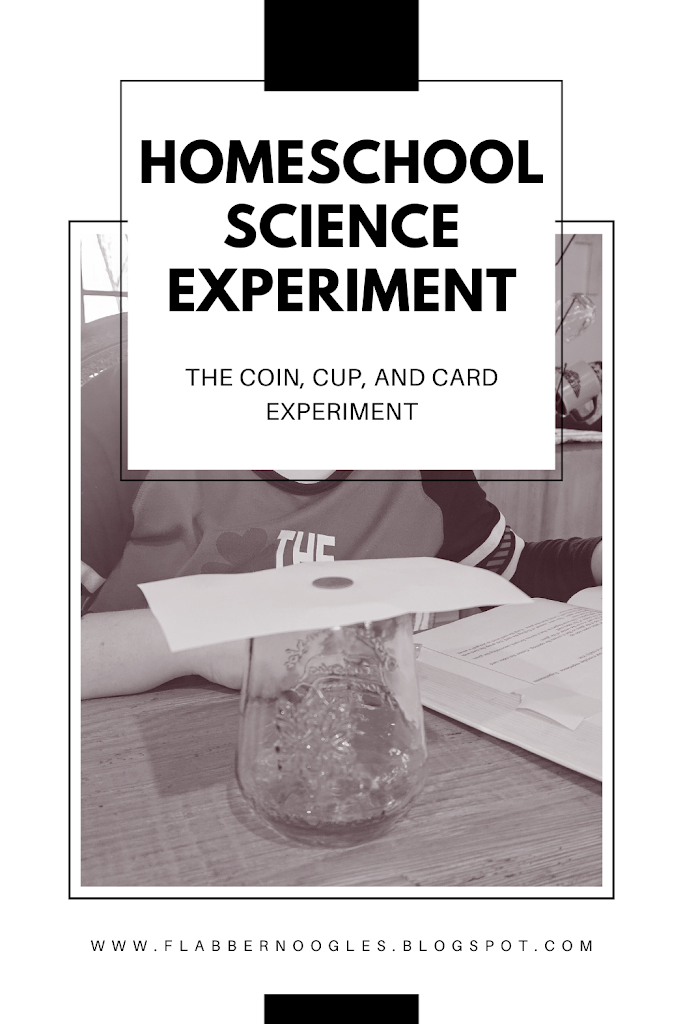the coin, cup, and card experiment: a simple
way to demonstrate force and inertia
If there’s one thing I’ve learned from homeschooling,
it’s that science is way more fun when you can see it in action. Reading about
Newton’s Laws is one thing, but watching them play out right in front of your
eyes? That’s where the magic happens. Today, we’re diving into a super simple
(but impressive) experiment using just a coin, a cup, and an index card to
explore the principles of force and inertia.
This experiment is perfect for middle and high school
students—simple enough to do in minutes but packed with real science. Plus,
it’s a great way to reinforce physics concepts without any complicated setups.
What You’ll Need:
- A
sturdy cup (glass or plastic, but something with a wide enough opening to
catch a falling coin) - A
coin (a quarter or nickel works well) - An
index card
That’s it! No fancy lab equipment required—just a
little bit of curiosity and a willingness to explore physics in action.
*This experiment came from the textbook Exploring Creation by Dr. Jay Wile for our
Physical Science class at co-op this year. I think this is an early version of
the textbook. I’ve been told there isn’t much difference in content from one
version to another…but confirm for yourself 😊
the experiment: testing newton’s first law
This experiment demonstrates Newton’s First Law of
Motion, also known as the Law of Inertia. It states:
“An object at rest stays at rest, and
an object in motion stays in motion unless acted upon by an external
force.”
Here’s how to see it in action:
Step 1: Set It Up
- Place
the cup on a flat surface. - Lay
the index card flat across the top of the cup. - Position
the coin in the center of the index card.
Step 2: The Fun Part
- With
a quick, sharp flick, use your index finger to snap the index card
out from under the coin. - Watch
what happens!
what you’ll observe
If done correctly, the coin will drop straight down
into the cup, instead of flying off with the card.
Why It Works: The Science Behind It
The coin wants to stay at rest because of inertia—the
resistance an object has to a change in its motion. When you flick the index
card, the force applied is enough to move the card, but not enough to
significantly move the coin. So, as the card zips out from underneath, gravity
takes over, pulling the coin straight into the cup.
making it more engaging
Want to take this experiment a step further? Try these
variations:
- Use
different types of coins. Does a penny behave
the same way as a quarter? What about a heavier object like a small
washer? - Change
the card material. Try a thicker piece of
cardboard or a thin sheet of paper. How does it affect the results? - Adjust
your flicking technique. Does a slow pull
work as well as a sharp snap?
Encourage your kids to make predictions before
testing, then discuss why certain outcomes happen.
real-world applications of inertia
This simple experiment ties into so many real-world
concepts! You can connect it to:
- Car
safety: Why do passengers lurch forward when
a car suddenly stops? - Tablecloth
tricks: Ever seen a magician pull a
tablecloth from under a full set of dishes? Same principle! - Sports:
Why does a soccer ball keep rolling until something stops it?
final thoughts
Homeschooling gives us such a great opportunity to
turn everyday objects into hands-on learning moments. This experiment may be
simple, but the lesson it teaches is foundational to understanding physics. (I
confess…Physics is hard for me! Give me a paintbrush anyday!) Plus, it’s always
fun to watch the coin drop (and maybe challenge your kids to explain why it
happens!).
So, grab a cup, a coin, and an index card, and give it
a try! Let me know in the comments—did it work on the first try, or did you and
your kids have to adjust your technique? Learning is all about experimenting,
after all!
*As
an Amazon Associate, I can earn from qualifying purchases made through links on
this blog. This means I may receive a small commission when you buy something after
clicking on my affiliate links, at no additional cost to you. Thank you for your support!













